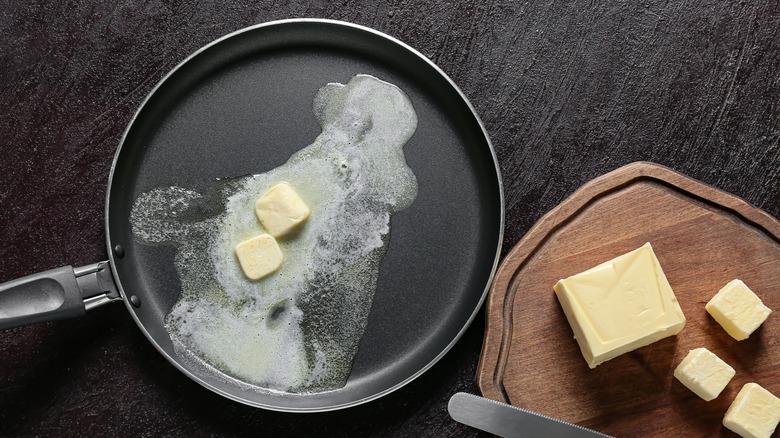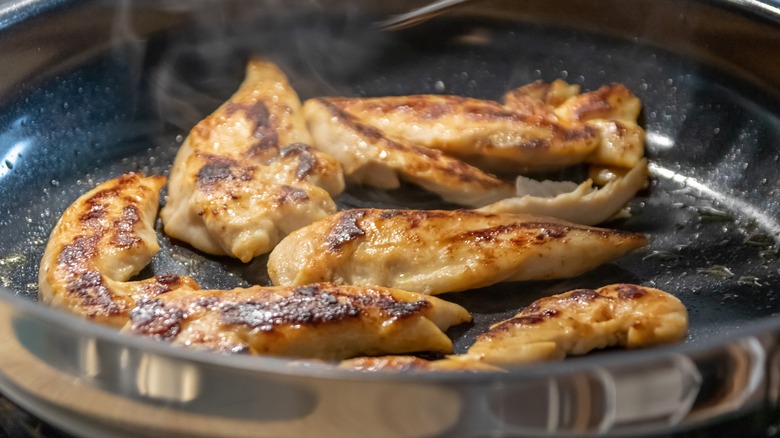Before Sautéing, It's Best To Let Butter Stop Foaming
We tend to think of butter and sautéing as natural partners, but sometimes they don't always work to each other's benefit. It's inviting to see that pool of warm butter after melting a slice in your pan, but toss your food in too early and you could end up with a soggy meal that's undercooked on the outside but overcooked on the inside as you wait and wait for your food to brown.
As tasty as butter is, it has elements that slow down its heating process, thus leading to this issue. You want your meat or veggies to sizzle the second they hit the pan, which means you need to know exactly when your butter is ready to go.
In the same way it helps to let oil start shimmering before you sauté, butter isn't ready to go until it stops foaming. The whole purpose of sautéing is cooking things quickly in hot fat; the foam from your butter subsiding is a sign that it's reached the ideal temperature.
It helps to bring the butter up to temperature and let it foam over a lower heat to prevent burning. This will also stop it from spitting and sputtering as the foam cooks off. The time to turn up your heat and start your sauté is just a little after the foam has stopped, since with too much more heat, your butter will start smoking, possibly bringing some acrid flavor to your food.
No foam means butter's water has been cooked off
Unlike oil, butter isn't just fat; it also has water and proteins. The foaming you see when you first start to cook butter is a result of the water starting to evaporate. That water inhibits browning, which is one of the main goals of sautéing.
In order to get good browning on your food, you need to hit high temperatures, but because foaming butter still has water in it, it's stuck at the boiling point of 212 degrees Fahrenheit, which is too low to quickly brown things. That's why cooking before the foaming subsides doesn't work well — you're essentially steaming your food with evaporating water instead of getting the high heat of the skillet and the fat.
Foaming will end when all the water is boiled out of the butter, leaving the fat and proteins. This lets you raise the temperature and get that nice brown crust. The lower temperature of the water will have also kept the pan cooler than is ideal, so you should wait a moment for the butter and pan to heat up.
Getting pure fat to cook in will also make sure your food is more evenly cooked, as the hot fat will coat the food better and cook all the parts that aren't coming in direct contact with the pan. Post-foam butter means just an all-around better sauté that gives you the heat you need with the buttery taste you love.

